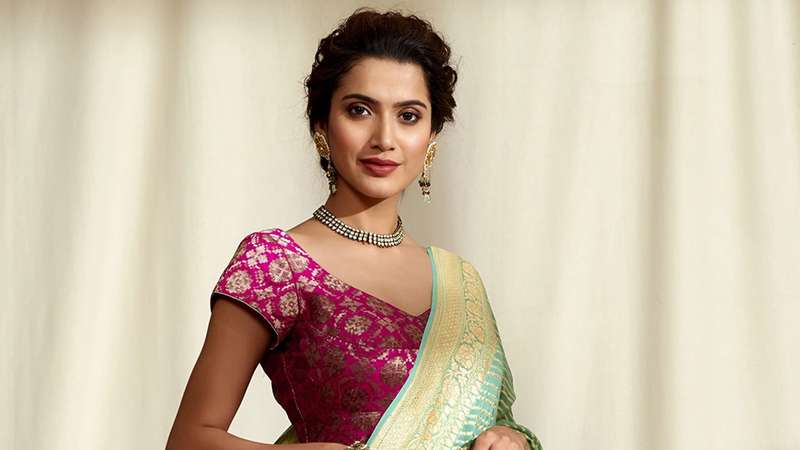
Handwoven Khaddi georgette -New Trendz
Khaddi Georgette is a colloquial name used by the natives so as to familiarize Chiffon. The name has a dubious origin and was marked from both Frenchmen and the Arabians deciphered as “Transparent cloth”. This alluring fabric has talks round the globe about its lightweight and softness like “Gossamer” woven with the unorthodox S & Z twist giving it a touch of pliability and a sublime territory to stretch. Made of silk this dazzling league is a wardrobe must and made significance in kinds of aristocracy & supremacy. In Handwoven Khaddi georgette ladies look glamorous in this shaded pure Khaddi Georgette sari woven in Lakkars looms. The sari design woven with matt zari and booties all over gives a perfect party look in summer


Jangalsaris are woven with colorful silk threads it’s decorated with intricate patterns of Jangala motifs and vegetation that fall along the sari. The luxurious fabric with intricate designs and detailing makes this Banarasisari ideal for weddings functions that can be found at style caret online stores.The Banarasisari has four main fabric varieties, Georgette, Shattir, Organza with zari and silk, and Katan.Georgette is a finely woven light fabric that is made of crepe yarn inter-woven with both warp and weft. It is popular in designing salwarkameez outfit designs, Bollywood saris, and designer saris.Shattir fabric is used to produce beautiful contemporary and exclusive Banarasisari designs. Organza is a richly woven fabric with the most beautiful Brocade patterns and designs that are made by warp and weft. Gold-coated silver threads are woven around the silk yarns to produce zaribrocade.Katan is a plain fabric that has woven pure silk threads that make pure silk saris. In the old days, katansari’s beautiful motifs and patterns were woven using handlooms but nowadays, they are produced using rapid looms and power looms
A Lakkars Employees (Fashion designer) artist created design boards by sketching the designs on a graph paper along with color concepts. Punch cards are then created before selecting the final design then hundreds of perforated cards are created to accommodate a single design for a sari. To knit the perforated cards on the loom, different colors and threads are used. The perforated cards are then paddled in a systematic manner to ensure the main weave picks up the right colors and patterns. The Banarasisari is divided into categories like Tissue, Butidar, Cutwork, Tanchoi, and Jangal. Tissue saris are woven with golden Zari Brocade to add sheen to the sari. The sari’s borders and pallu are patterned with self-woven paisleys. Butidarsaris are woven with brocade threads silver, silk, and gold. The darker shade of gold compared to the silver threads has earned the brocade patterning the name Ganga-Jumuna. Cutwork saris are the less expensive version of Jamdanisaris. They are products of the cutwork technique on plain texture. Leaves, jasmine, creepers, and marigold flowers are popular motifs featured on Cutwork saris. Tanchoisaris patterns are woven with colorful weft silk yarns. The decorations on this sari are large motifs of paisleys and the border has crisscross patterns.





